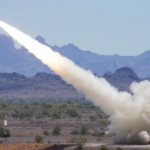
A Defense Department Inspector General’s (DoD IG) audit report finds that the Army could be spending more than $400 million on its Integrated Air and Missile Defense Program (IAMD) that it hasn’t demonstrated it can control and manage for an effective capability. IAMD is a future capability to integrate all air and missile defense sensors, weapons and mission command. “We recommend the Under Secretary of Defense for Acquisition, Technology, and Logistics postpone the initial production decision until the project manager…













